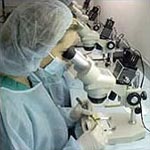NHI Surgical Team
Dr Rassman,
You may or may not have seen this post on the online forums that you visit. Dr Shapiro was the only Dr to answer these questions and as a reader of the forums i wanted to see if you would answer them about NHI?Do all NHI’s surgical technicians have valid, unrevoked, or unsuspended certificates/licences? Do they place the grafts in the receptor sites during HT surgery? And if they do, Is The surgeon in the room all the time with his HT patient,supervising that process of grafts transplant?
 At the New Hair Institute, our technicians were all internally trained by me. They are not certified by any state agency. If you check with Dr. Shapiro, you will find that I was the doctor who trained him in FUT. Our technicians do both cutting and placing of the grafts and the surgeon is either in the room or close by checking on the progress of the technicians frequently. As these technicians have been trained by me, I know what is happening at all times. I am supervising everything that goes on before and during the surgery. Either Dr. Pak or I usually see the patient the next day when we wash the hair and make sure that the scalp is clean of all crusts (mostly done on the day of surgery).
At the New Hair Institute, our technicians were all internally trained by me. They are not certified by any state agency. If you check with Dr. Shapiro, you will find that I was the doctor who trained him in FUT. Our technicians do both cutting and placing of the grafts and the surgeon is either in the room or close by checking on the progress of the technicians frequently. As these technicians have been trained by me, I know what is happening at all times. I am supervising everything that goes on before and during the surgery. Either Dr. Pak or I usually see the patient the next day when we wash the hair and make sure that the scalp is clean of all crusts (mostly done on the day of surgery).
The quality of the technicians determine the results you will get after 8+ months have passed. I recently met with a patient who had over 4000 grafts from an experienced doctor (at another clinic) with what I suspect was a very weak and inexperienced team. When I viewed his results 1 year after his procedure, it was evident that there was easily a 90% failure of the grafts to grow. If the surgeon does not have absolute control over the technical process minute by minute and the technicians and nurses are not very experienced, these large sessions often fail. Here I am just questioning the quality of the technician work in this particular patient. Many doctors have difficulty in hiring experienced people, particularly if they attempt these large sessions and hire inexperienced people. The sloppy work by many itinerant technicians reflects poor training and the patient becomes a victim, never aware of what is happening to him. Even the technicians are victimized by the heavy workload of a very large surgical case and few can manage the tedious work for hour upon hour (e.g. often 7-9 hours for a 4000 graft case with a highly experienced and competent team).
The tragedy here is not just the wasted money (for many people their life savings) but the depletion of the donor hair supply (an invaluable and non-replaceable resource). I warn patients all of the time that as they do their diligence, they should command the ‘team’ nature of this surgery and not go for the least expensive bargain available. This patient paid $2/graft and lost a considerable amount of his donor supply. To say he got what he paid for would be insensitive on my part.

Surgery is all well and good but there are products on the market now that will regrow new hair naturally. I think I would try them first before resorting to surgery.
That all depends on how much hair you have lost and for how long you have been losing it.
No treatment works 100% of the time for 100% of the people. If caught early, and treated effectively, I don’t see the need for surgery. However, many benefit from surgery. Especially now a days with FUE ‘s etc….